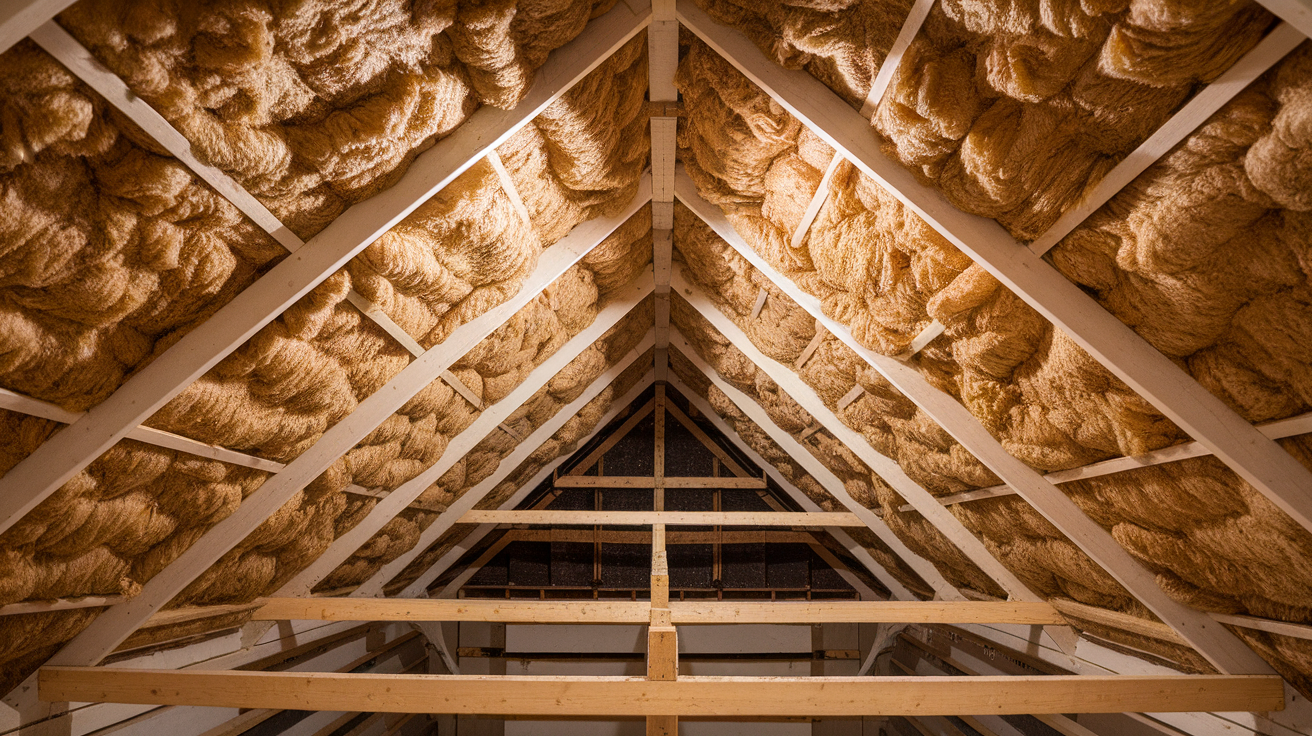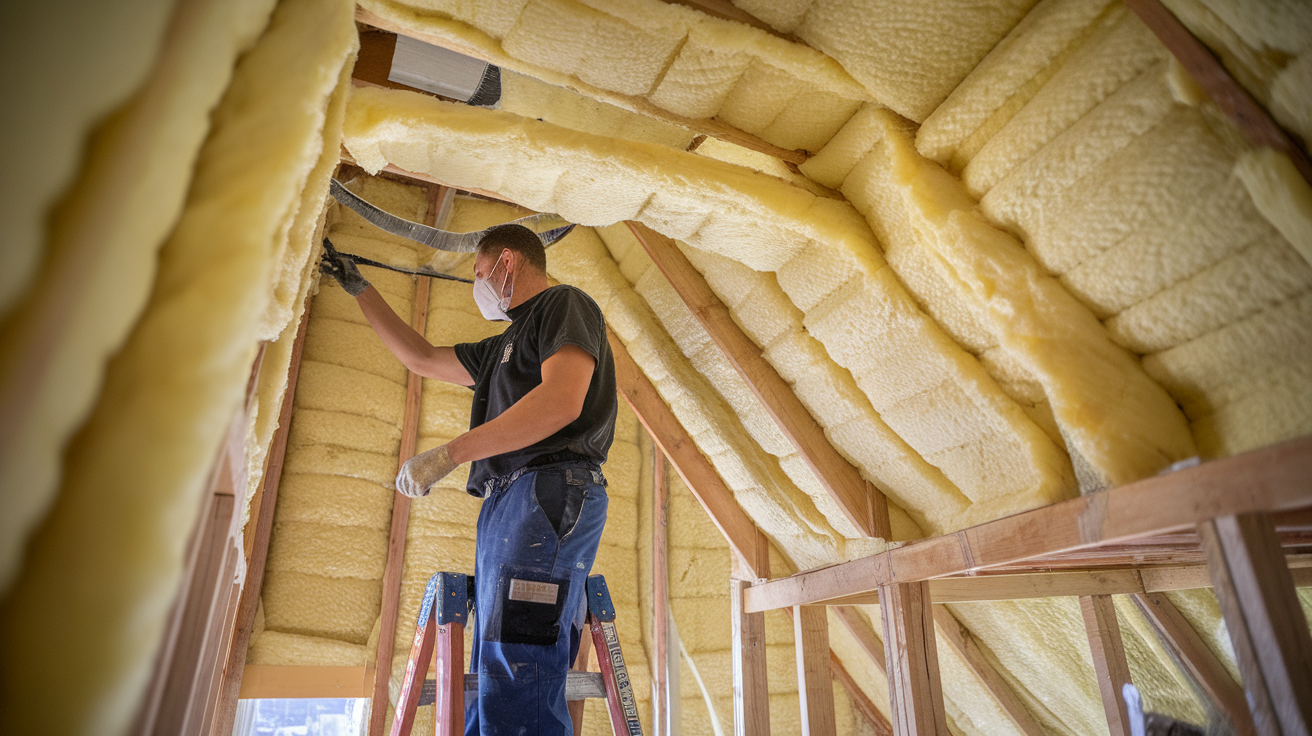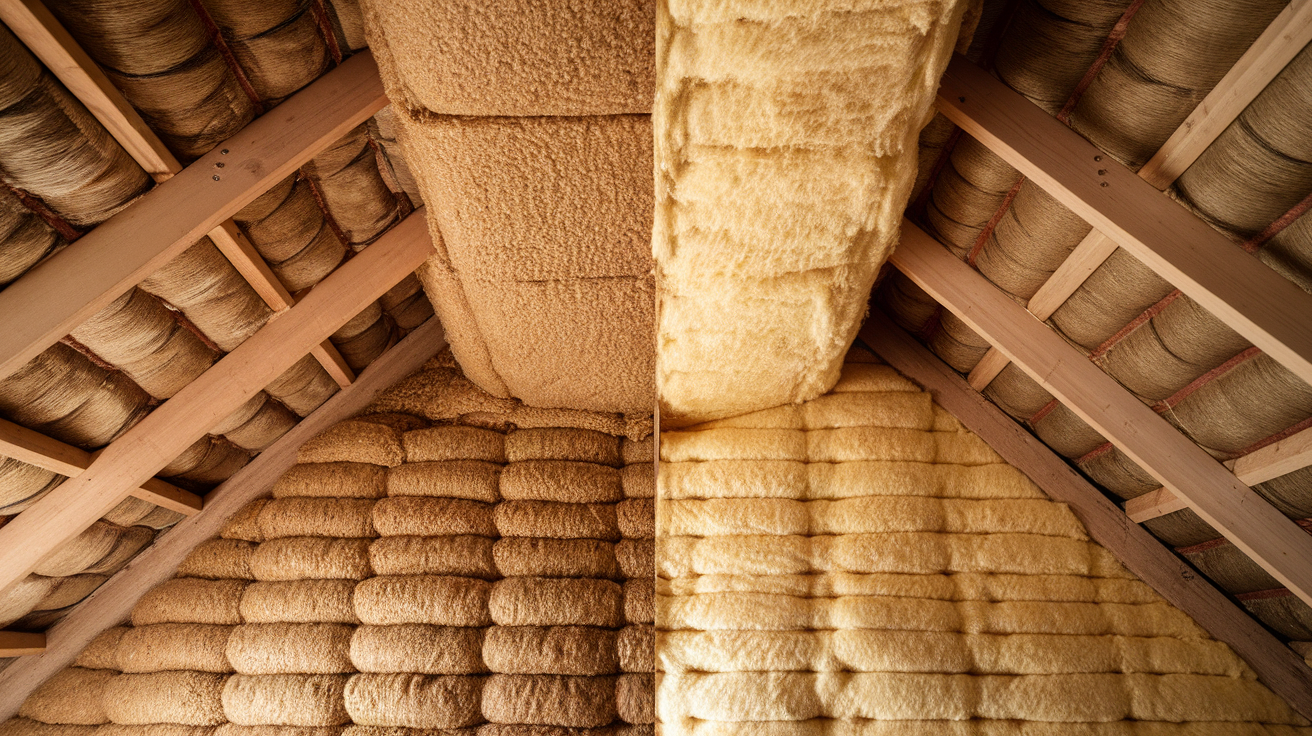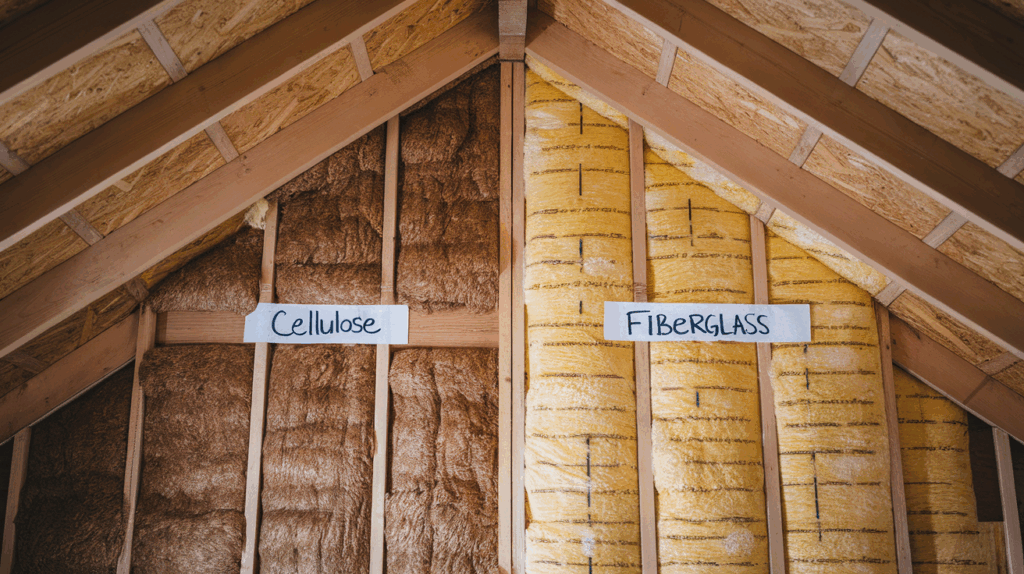When it comes to insulation, cellulose and fiberglass are two popular options, each with its own set of benefits.
I was surprised at how different these materials are when I first started looking into them.
Cellulose is made from recycled paper, making it an eco-friendly choice, while fiberglass is made from glass fibers and is known for its durability.
Both materials help to keep your home warm in the winter and cool in the summer, but they perform differently in terms of installation, cost, and effectiveness.
In this blog, I’ll break down the differences between cellulose and fiberglass insulation to help you decide which one is best for your home.
Understanding Cellulose Insulation

Cellulose insulation is made primarily from recycled paper products, often newspaper, that are treated with fire retardants like boric acid.
It is considered an eco-friendly choice because of its high percentage of recycled content.
This material is typically used in attic and wall cavities, installed as blown-in insulation.
1. Composition and Sustainability
One of the main advantages of cellulose insulation is its sustainability.
Since it’s made from recycled paper, it’s a great option if you want to reduce the environmental impact of your home improvements.
Cellulose is biodegradable, and its manufacturing process is energy-efficient compared to fiberglass.
If you’re looking to make an environmentally conscious choice, cellulose is a strong contender.
2. Thermal Performance
Cellulose insulation tends to offer a higher R-value per inch compared to fiberglass, meaning it provides better thermal resistance.
For example, cellulose typically has an R-value of 3.7 to 3.8 per inch, which means it’s more efficient at insulating your home, keeping it warmer in the winter and cooler in the summer.
This is especially important if you live in a climate that experiences significant temperature fluctuations.
With cellulose, you get excellent thermal performance, which can lead to savings on your energy bills over time.
3. Installation Considerations
One thing to keep in mind is that cellulose is usually installed as blown-in insulation.
This requires specialized equipment and professional installation, which can increase the initial cost.
However, the extra cost may be worth it, as the material fills spaces more effectively than fiberglass, reducing gaps and ensuring a more complete coverage.
The blown-in installation method also helps to reduce air leaks, improving the overall energy efficiency of your home.
Understanding Fiberglass Insulation

Fiberglass insulation is made from fine glass fibers and is one of the most widely used insulation materials in the United States.
It is available in several forms, including batt, roll, and loose-fill options.
This material is especially popular because of its affordability, versatility, and availability.
1. Material Composition
Fiberglass insulation is made by melting sand and recycled glass, then spinning the mixture into fine strands. These strands are then bonded together to create an insulating material.
The structure of fiberglass insulation traps air in small pockets, which helps to resist heat transfer. This characteristic makes fiberglass a reliable option for thermal insulation.
2. Cost-Effectiveness
One of the main reasons people choose fiberglass insulation is its affordability. Compared to cellulose, fiberglass is typically less expensive to purchase and install.
For homeowners on a tight budget, fiberglass offers an excellent balance between cost and performance.
It’s widely available at most home improvement stores, making it a convenient option for DIY projects or professional installation.
3. Installation Flexibility
Fiberglass insulation is easier to handle than cellulose, which can be a big advantage when it comes to DIY installations.
It comes in batts or rolls that can be cut to fit specific spaces, such as attics or walls.
While it’s possible to install fiberglass insulation yourself, I always recommend having a professional install it if you want to ensure optimal results and avoid the risk of fiberglass particles irritating your skin or lungs.
Comparing Thermal Performance: Cellulose vs. Fiberglass

When it comes to thermal performance, both cellulose and fiberglass have their strengths. As I mentioned earlier, cellulose offers a higher R-value per inch, making it more effective in insulating your home.
However, the R-value isn’t the only consideration when choosing insulation.
1. Airflow Resistance
Cellulose has superior air-sealing capabilities due to its density. It settles into the gaps and cracks in the insulation space, making it better at blocking airflow.
This is particularly beneficial in areas prone to drafts or in homes with irregular shapes, where fiberglass may not fit as perfectly.
Fiberglass insulation, on the other hand, can allow for some air movement, especially if it isn’t installed tightly.
Even though fiberglass is great at resisting heat flow, you may experience some energy loss if there are gaps in the installation.
This makes cellulose more effective at stopping air leaks.
2. Long-Term Effectiveness
Over time, cellulose insulation can settle and lose some of its insulating power, especially in areas that are not adequately sealed.
However, if installed properly, cellulose can last many years.
Fiberglass does not settle as much as cellulose, so it retains its insulating power over time.
3. Environmental Impact
If sustainability is important to you, it’s important to weigh the environmental impact of your insulation choice.
As I mentioned, cellulose is made from recycled paper products and is more eco-friendly than fiberglass.
The manufacturing process for fiberglass insulation involves more energy and natural resources, such as sand and recycled glass.
Fiberglass insulation can also produce harmful dust during installation, which can be irritating to your eyes, skin, and lungs.
This requires extra precaution when handling it, while cellulose insulation is generally considered safer in this regard.
4. Installation: Cost, Labor, and Time
As a general rule, fiberglass insulation is easier and quicker to install. It can be done in a DIY-friendly way, though I always recommend professional installation for optimal results.
The installation cost for fiberglass is typically lower than that of cellulose due to its availability and simpler application process.
Cellulose, on the other hand, must be installed by professionals with specialized equipment.
The installation process for cellulose is more time-consuming, and the cost is typically higher.
However, this additional cost can be justified if you’re looking for a higher-performing insulation option that is also more eco-friendly.
5. Noise Reduction: Which Insulation Performs Better?
Both cellulose and fiberglass insulation can help with noise reduction, but cellulose generally performs better in this area.
Its dense nature helps to absorb sound more effectively than fiberglass, making it a great option for areas that require extra noise insulation, such as bedrooms or media rooms.
If noise reduction is a priority in your home, cellulose is the way to go.
Which Option is Better for Your Home?
So, how do you decide? Both cellulose and fiberglass insulation have their advantages, but the best choice depends on your specific needs.
Consider Cellulose If
- You prioritize eco-friendliness and want to use a sustainable material.
- You’re looking for higher thermal performance with a higher R-value.
- You live in an area with significant temperature fluctuations and need maximum energy efficiency.
- You don’t mind paying a bit more for professional installation to ensure better results.
Consider Fiberglass If
- You’re on a tighter budget and need a cost-effective solution.
- You’re looking for an easier, DIY-friendly option.
- You live in an area with a mild climate and don’t need the highest level of insulation.
- You prefer a material that will maintain its form over time and doesn’t settle as much as cellulose.
Conclusion
In the end, both cellulose and fiberglass insulation have their strengths, and the decision comes down to your personal preferences and your home’s needs.
Cellulose provides better thermal performance, noise reduction, and environmental benefits, making it a great choice for those willing to invest in a more eco-friendly and efficient solution.
On the other hand, fiberglass offers a cost-effective, easy-to-install option that works well for a variety of climates.
If you’re still unsure, I recommend consulting with a professional to help you assess your home’s insulation needs.
Regardless of which material you choose, proper installation and a thorough understanding of your insulation’s capabilities will ensure your home stays comfortable, energy-efficient, and well-protected for years to come.

